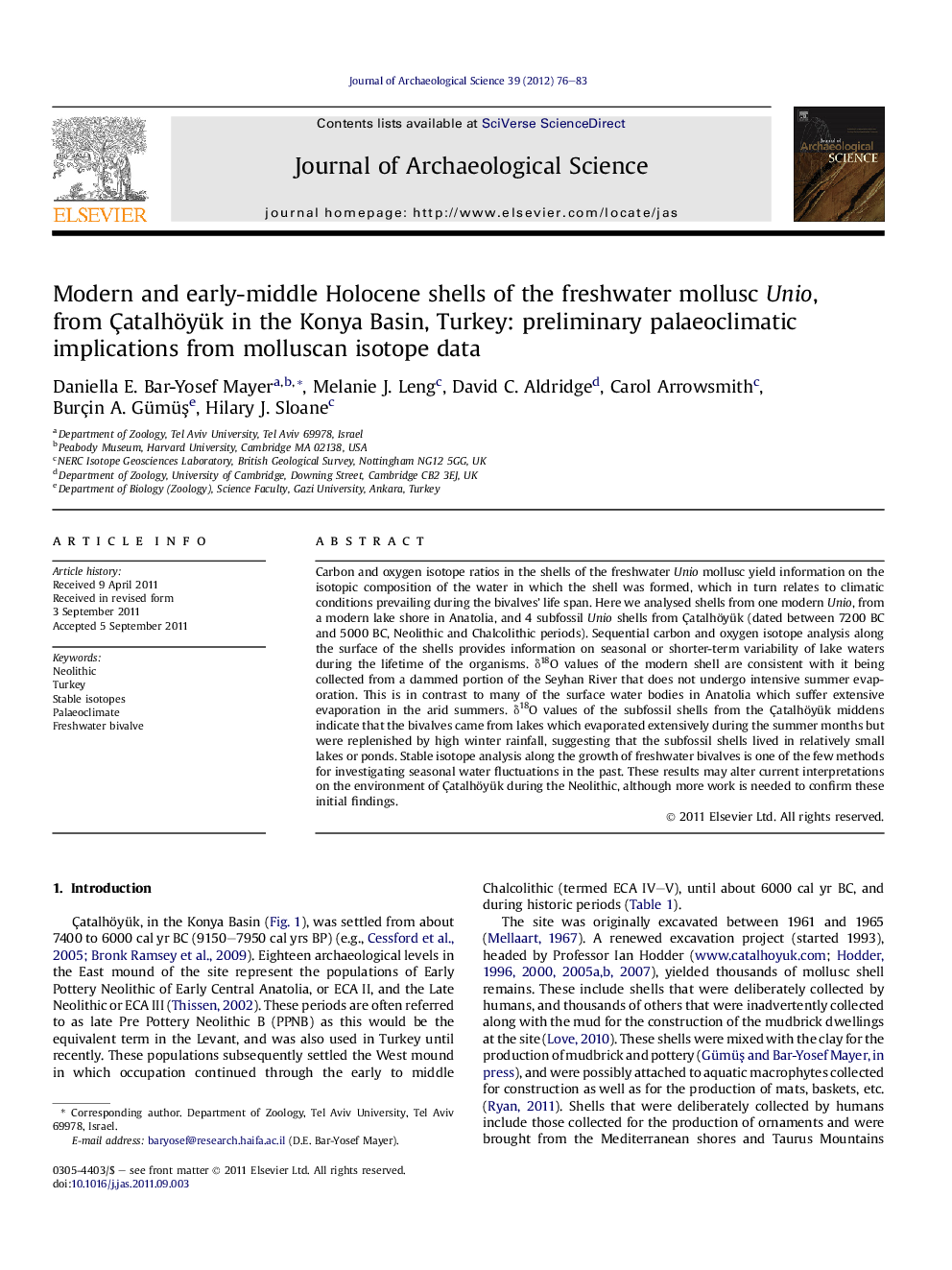| Article ID | Journal | Published Year | Pages | File Type |
|---|---|---|---|---|
| 1035921 | Journal of Archaeological Science | 2012 | 8 Pages |
Carbon and oxygen isotope ratios in the shells of the freshwater Unio mollusc yield information on the isotopic composition of the water in which the shell was formed, which in turn relates to climatic conditions prevailing during the bivalves’ life span. Here we analysed shells from one modern Unio, from a modern lake shore in Anatolia, and 4 subfossil Unio shells from Çatalhöyük (dated between 7200 BC and 5000 BC, Neolithic and Chalcolithic periods). Sequential carbon and oxygen isotope analysis along the surface of the shells provides information on seasonal or shorter-term variability of lake waters during the lifetime of the organisms. δ18O values of the modern shell are consistent with it being collected from a dammed portion of the Seyhan River that does not undergo intensive summer evaporation. This is in contrast to many of the surface water bodies in Anatolia which suffer extensive evaporation in the arid summers. δ18O values of the subfossil shells from the Çatalhöyük middens indicate that the bivalves came from lakes which evaporated extensively during the summer months but were replenished by high winter rainfall, suggesting that the subfossil shells lived in relatively small lakes or ponds. Stable isotope analysis along the growth of freshwater bivalves is one of the few methods for investigating seasonal water fluctuations in the past. These results may alter current interpretations on the environment of Çatalhöyük during the Neolithic, although more work is needed to confirm these initial findings.
► Stable isotopes in Unio bivalves archive seasonal environmental information. ► δ13C and δ18O were measured in 4 shells from the occupational sequence. ► A modern control sample reinforced the procedure. ► Results confirm winter and spring flooding followed intensive aridity during summer. ► Neolithic Çatalhöyük experienced similar climate to today during investigated years.
